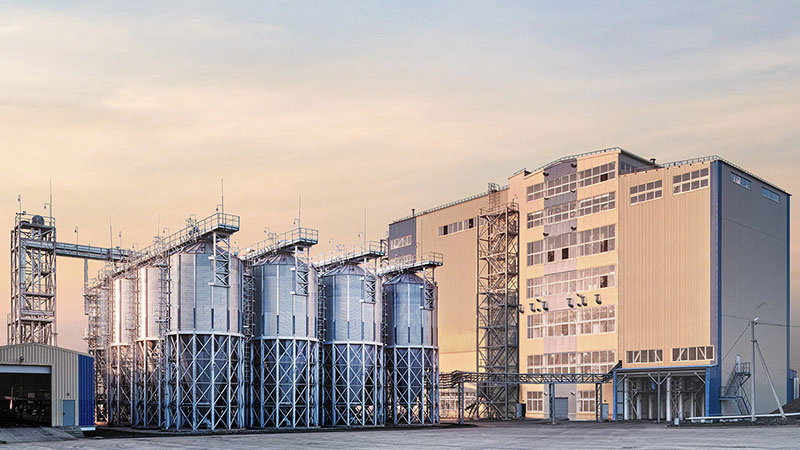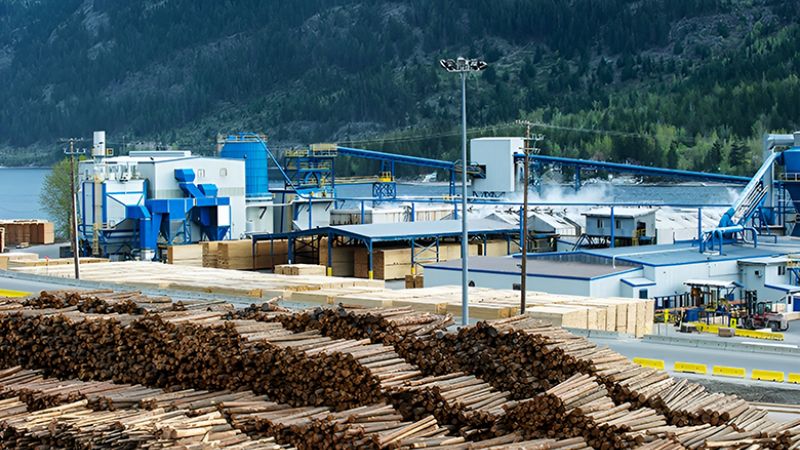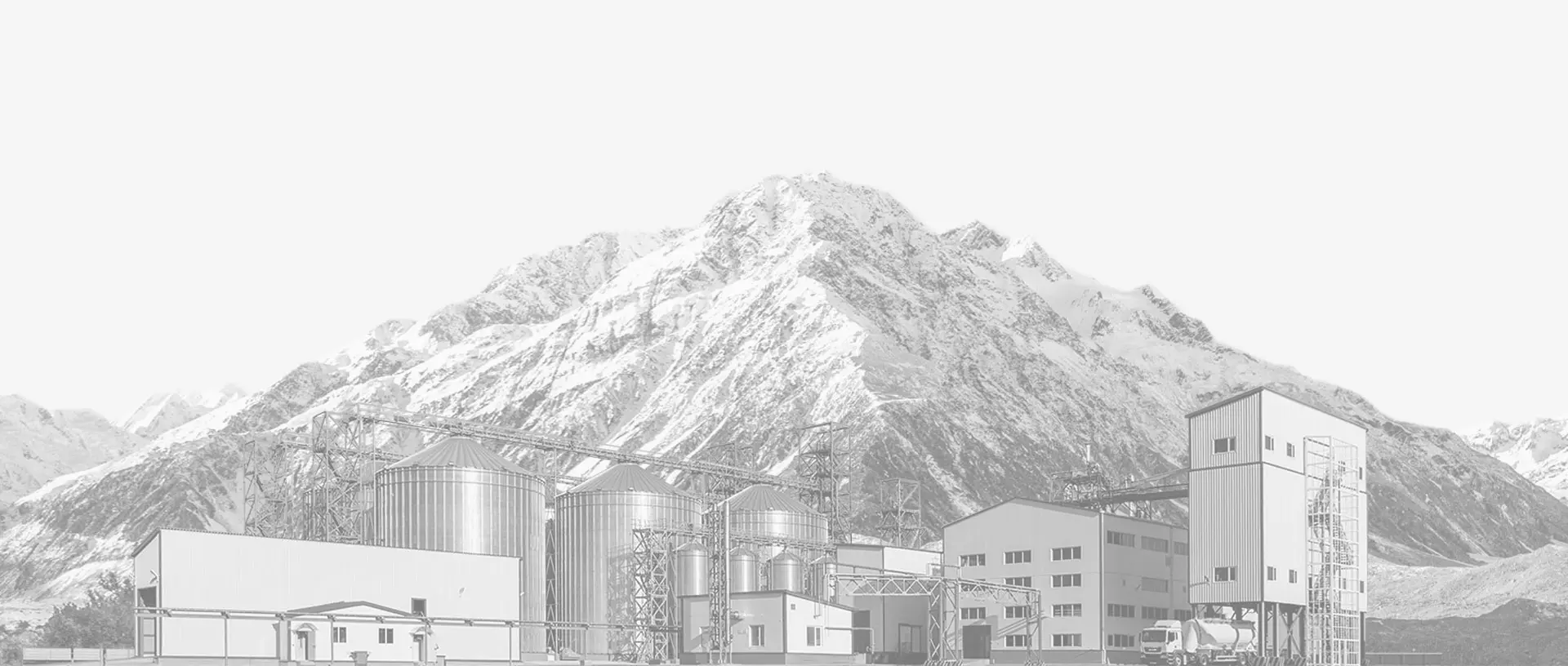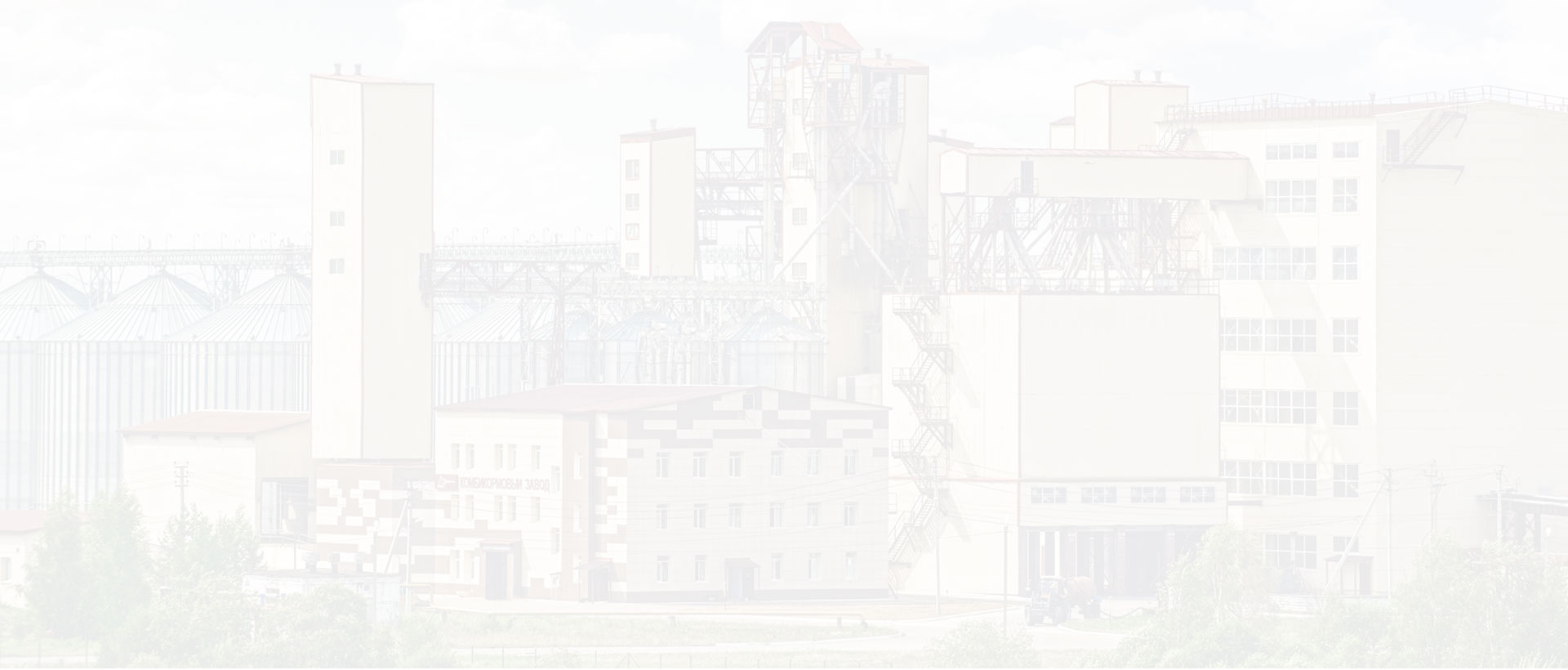
This is where you find all our press releases and news articles.

In order to obtain high milk yields, a dairy farmer needs to know how to feed the animals. Let us consider in more detail how the cattle feeding ration for the dairy direction is composed.
1 Basic cow diet
2 What needs to be added to the menu to increase milk yield
3 Rules for calculating the daily portion for animals
4 Menu for milking cattle according to the season
5 Diet during the transition period
6 How to feed cows to increase milk yield
7 How to feed milking cows with high productivity
8 Nutrition of dairy cows after calving
9 Pellets
With a poor diet, the cow's body will not receive a sufficient amount of useful elements, which as a result leads to a decrease in overall performance. If you do not take any measures to correct the situation, this is fraught with a lack of vitamins, due to which the animal loses mass, and its articular and bone structure becomes fragile. Sometimes such negligence in the maintenance of cattle leads to the death of the herd.
In addition, a disturbed diet in cows can lead to a significant weakening of the immune system, which is fraught with the development of infectious diseases. To prevent the occurrence of such difficulties, it is necessary to carefully develop food for cows, given that protein, fat, fortified and mineral supplements should be in abundance.
The menu should be compiled individually for each individual, taking into account the age and body weight of the cow, the characteristics of the content. In the course of developing nutrition for dairy specimens, it should be borne in mind that 1 feed unit (CU) is required per 100 kg of live weight of an individual.
Important! Serving size usually needs to be increased when milk is milked to prolong lactation and increase milk intake. Moreover, according to experienced livestock breeders, cows should not be fed, since this is fraught with the appearance of problems with the gastrointestinal tract.
The nutrition of dairy cows involves the use of certain types of products. To supply the proper amount of all the necessary elements to the cow's body, their diet should be diversified. During the period of feeding heifers, three types of feed should be used:

The main product in the menu of dairy cows is dry food of plant nature. Cows should receive such products twice a day, and the feeder must be cleaned of leftover food to prevent spoiled food from entering the livestock. This group of feed includes:
In such feeds there is a sufficient amount of fiber, which favors the improvement of salivation and a decrease in acidity in the stomach. Such food is given to animals before concentrates. These products should make up approximately 50% of the total daily nutrition.
An important component of the cow menu is hay, for the preparation of which cereals and shoots of legumes are used. Branches and straw are not used as often as they contain less nutrients.
Coarse food is often used to make haylage, which is characterized by minimal loss of energy. Silage means drying the grass and then chopping it. Then the crushed plant mass is placed in a special container or trench and rammed to exclude air access.
The products of this variety are necessary for cows to normalize body functions against the background of a shortage or overdose of proteins when feeding with roughage. Such food helps to replenish missing nutrients. This group includes all kinds of compound feeds that help bring the protein level back to normal. With an excess of this substance in the body, it is recommended to feed livestock with rye and oats.

In order to increase the level and properties of the necessary nutrients entering the body of farm animals, livestock breeders use specially developed feeding. From this product category, milking cows need:
Such feeding is necessary for highly productive cows, the body of which lacks vitamins and micro- and macroelements present in natural food.
Such food is natural for farm animals (especially in the warm season). These feeds help to increase milk yield. The cows can be given freshly cut vegetation or simply let the cows out into the field, where they can independently regulate the amount of vegetation consumed.

A similar category of feed includes:
Important! It is required to ensure that the cut grass is of high quality and fresh. Rot and the formation of fungus have a negative impact on the well-being of animals and the characteristics of the resulting dairy products.
Food in this category includes plant products with a moisture content of approximately 90%. From this group of feed for cattle you should use:
Such products are characterized by increased nutritional value and a large supply of energy. For dairy specimens, it is recommended to give raw washed potatoes (but do not use tubers with a greenish peel), fodder beet and carrots. To prepare tubers, most often they are ensiled and steamed, which helps to increase the nutritional value of feed.
To feed dairy cows, you need to use animal products. The main purpose of introducing such products into the menu of dairy cattle breeds is to increase the level of proteins, thereby increasing the amount of milk received.
From this category of feed, the following should be added to the menu of milking cattle:

During the development of the menu, it is necessary to be guided by characteristics such as body weight and age category of the individual. For example, for overly thin animals, the portion should be increased, and the diet should be carried out more intensively.
For young heifers, the amount of feed must also be increased by 10%. During milk production, in order to stabilize lactation and milk synthesis, the amount of food consumed can also be increased, but within logical limits. Milking cows should be fed with all categories of feed (green, coarse, succulent, animal). Moreover, the menu must be diversified with the help of special dressings and compound feeds.
The serving size is calculated taking into account the dry matter concentration. The optimal volume of dry ingredients for one individual is approximately three kilograms per 100 kg of live body weight. If there is a lack of juicy products in the menu, the rate should be increased to 5 kg.
For an individual weighing 485 kg, which daily gives 15 liters of milk, the menu should consist of the following feeds:
In addition, a certain amount of water must be present in the diet of milking heifers. All cows that give milk in significant quantities require more water when compared with low-yield breeds. As a rule, the volume of consumed liquid is determined at the rate of 1 liter per 3 kg of milk received.
In the winter months, the female drinks approximately 37 liters, and in the warmer months, about 58 liters. Water should be served to the cows at least 3-4 times throughout the day.
Properly selected nutrition for pregnant heifers is one of the main factors contributing to successful gestation and calving. The development of the menu should be carried out after conception. Food for a pregnant cow should be nutritious and easily digestible. A pregnant individual needs a certain amount of green and juicy food, especially forbs and forage beetroot. For roughage, it is recommended to give preference to dried legumes.
An important component of the diet is compound feed, vitamin supplements, feed yeast, bran, chalk and limestone, and animal products (fish oil and meat and bone meal). All these components help to maintain the balance of nutritional value, macro- and micronutrients, vitamins and minerals.

It should be noted that the main product in the diet of cows of any age category (except for newborn babies) is hay and green feed. All other products are just complementary foods.
Hay and straw form the basis of the winter menu of milking cows. Silage, combined feed and root crops are used as top dressing. Experts advise to harvest dry grass in large quantities since the summer, since the average individual should receive approximately 16 kg of this product daily. If it is not possible to prepare dry plant products on your own, which is why you have to buy them, you need to carefully consider them. The hay should be dry, fragrant and free of any unnecessary impurities.
Consider what is the daily ration of products for a dairy cow in kilograms and how many feed units this is. One individual should receive in winter:
The menu for milking cattle in the summer months differs significantly from the diet in winter. The basis of summer food is green vegetation, which contains all the necessary nutrients to increase milk yield. But in any case, even highly productive individuals should add concentrated feed in the amount of approximately 280 grams every day.
In addition, the summer diet may differ, which is due to the type of livestock keeping:
It is appropriate to keep cows, from which you can get a significant amount of dairy products, by pasture method, if there is sufficient grass. Otherwise, you will still have to resort to the help of compound feed and silage fodder.
In hot months, the daily portion of a cow consists of the following foods:
When an animal is to be moved from pasture to stall, there is a risk of gastrointestinal difficulties. In order to avoid such problems, the transition of heifers to the new menu should take place in stages. Nutrition means increasing the amount of coarse food and nutrients consumed.
The menu of dairy cattle at the end of grazing should include:
At each stage of the formation of a dairy individual, a certain nutrition is required. Let's consider in detail each phase, taking into account the periods of lactation.
In the interval between the birth of a calf and the appearance of the first milk, significant changes occur in the metabolic process of the woman in labor. The highest point falls on the time interval from 20 days before the birth of the baby and up to 20 days after calving.
For the last three weeks, the cow should be fed about 4 kg of concentrated feed every day. This contributes to the adaptation of the body to new feeds and helps to compensate for the lack of energy resources in the body.
The heifer diet at this stage includes the following foods:

When the calf is born, it is necessary to correctly formulate the diet of the new mother, since at this time the laying of her subsequent performance takes place:
High-yielding dairy individuals cannot eat the required amount of roughage within 60 days after calving. For this reason, in order to produce milk, muscle protein elements and body fat are wasted. The diet of the animals should be sufficient so that the heifer does not lose more than 0.5 kg of weight per day.
For highly productive dairy animals, a diet plan should be drawn up, taking into account the lactation phase. A heifer with a body weight of approximately 500 kg, giving about 17 liters of milk per day, should be fed:
The daily rate is divided into three doses. When serving immediately the daily portion, the food is moistened with saliva, which is why it begins to acidify, so the animal will refuse food.
The nutrition of a cow after giving birth to a calf should be rich in nutrients. During this period, it is required to increase the daily amount of concentrated feed consumed by almost half, and without fail, juicy feed must be present in the diet.
According to experts, after the birth of a baby, heifers should be fed with chalk and baking soda. During this period, it is recommended to exclude silage and any acidic foods from the diet, as this contributes to a decrease in milk production.
Animals currently need a lot of crude fiber. In addition, it is necessary to feed the cow with special means to prevent the development of ketosis.

At present, pelleted feed is widely used in feeding cattle, which contributes to an increase in productivity. In addition, feeding the cows with these feeds makes it much easier to calculate the dosage.
Although the use of such feed has some disadvantages. If the animal's diet consists only of granules, this leads to a decrease in milk fat and milk yield. In addition, because of this, there are problems with the work of the scar.
Compound feed should make up a maximum of 50% of the diet, but should be given in combination with bulk feed or silage.
Thanks to extrusion processing, nutritious and tasty feed is obtained. The use of such products for feeding cows can increase milk yield by 20-40%. Such food is practically completely processed in the animal's body.
Having the right mix of reliable, high-quality pellet machine and pelletizing systems and expert support is essential to your success. Watch how our end-to-end feed pellet plant solutions have helped our customers optimize their performance.
Our customized and future-proofed turnkey pellet plant solutions is designed with you at the core. From vision to reality and beyond, our team stays connected with yours. Giving you peace-of-mind with an expert at your side.

At RICHI, we go beyond project completion. With RICHI Servicee, we’re your dedicated partners in success. Count on us for expert guidance, minimal downtime, and optimized productivity. Choose RICHI for unmatched service and support.



Meet global product demands and quality standards with industry-leading pellet plant design, engineering, equipment, and construction services for pellet processors.


Your Partner Beyond Project Completion
2000+ cases
RICHI is the leading designer, manufacturer and builder of pellet plants in the world, completing over 2000 projects in 140 countries across 6 continents.
Read More
Increase plant productivity, profitability, and safety by integrating high quality equipment into your pellet production line. Over the years, RICHI has become China's top pellet equipment manufacturer. At the same time, RICHI has established valuable partnerships with the world's leading component and raw material manufacturers to bring you the best there is in technology, automation, and efficiency in pelleting plant machinery.

For nearly 30 years, RICHI has been providing best-in-class pellet plant equipment and services to clients across a variety of industries, sizes, and needs. We pride ourselves on the knowledge and skill that each team member possesses – from our technical sales team to our process design engineers. You can count on RICHI Machinery to take your operation to the next level of innovation, quality, and success.
Need help with your pellet manufacturing plant project? Contact us today.
ANIMAL FEED
BIOMASS
WOOD
ORGANIC FERTILIZER
AQUA FEED
CAT LITTER
MUNICIPAL WASTE RECYCLING
SPECIAL PELLET PRODUCTION
RICHI Machinery continues to deliver world class pellet mill equipment, pellet plant engineering and project solutions that add value to our customers in the animal feed, wood waste, agriculture waste, organic fertilizer, cat litter and special pellet products industries. Throughout the years, we RICHI Machinery have built strong brand, becoming industry-leading pellet machine manufacturer. We value integrity, promise quality, and prioritize your success.
Learn MoreWith our expert team, we precisely implement your process engineering requirements in pellet mill and pelletizing plant systems. No matter which industry you’re in – we understand your needs and deliver solutions that meet the highest standards.
At RICHI, quality comes first. Our pellet making machine and related pellet line equipment undergo rigorous quality controls to ensure they meet the highest standards. Rely on products that are durable, safe, and efficient.
With decades of experience in pellet machine and pellet production line production, we have earned a reputation as a trusted partner in various industries. Our expertise allows us to cover a wide range of applications.
Not only do we offer premium pelleting equipment, but we are also experts at designing, building, installing, and maintaining facilities from the ground up. Our expertise is within pellt plant process design, discovering the most efficient, productive, and profitable way to handle your materials in an end-to-end cycle.

Keeping in touch with us is an effective way to solve all your problems. If you have any needs or questions, please leave your contact information, then RICHI technical consultants will send design, quotation, videos to your mailbox. You can also contact us directly via WhatsApp: +86 13838389622
Copyright©2015-2024 by HENAN RICHI MACHINERY CO., LTD. All rights reserved.